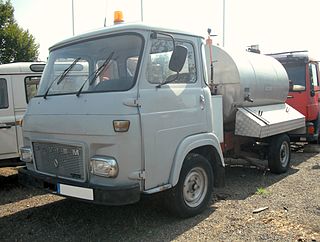
The Mitsubishi 4G9 engine is a series of straight-4 automobile engines produced by Mitsubishi Motors. All are 16-valve, and use both single- and double- overhead camshaft heads. Some feature MIVEC variable valve timing, and it was the first modern gasoline direct injection engine upon its introduction in August 1996.

The Prince G-series engine was the company's only straight-four and straight-six engines which began production in 1955. A number of variations were made, with both OHV and OHC heads. A diesel four-cylinder with 1.9 L (1,862 cc) was also built, called the D-6. The G series was used in the Skyline, the Laurel, and the Gloria from the 1950s to the early 1970s.

In January 1989, Volkswagen Commercial Vehicles introduced a 1 tonne pickup truck, called the Volkswagen Taro, to complement the half tonne Caddy pickup / panel van ranges, and the 1 tonne Transporter van and chassis cab ranges. The name "tarō" is a suffix used in Japanese to denote the oldest brother or son, or the first-born son of a family.
The Renault DiET engine also known as "D engine" or "D-Type" is a straight-4 automobile engine from Renault designed to replace the existing Cléon-Fonte engine in the Renault Twingo.
The F7R engine is used in Renault Clio Williams, Megane Coupe and Renault Sport Spider. The engine was created because displacement limit for FIA World Rally Championship Group A was 2000 cc and more power could be extracted from F7P (1764cc) engine with more capacity.

The Toyota NR engine family is series of small inline four piston engines by Toyota, with capacities between 1.2 and 1.5 litres.
The Saviem JL was a range of heavy/medium trucks manufactured by the French manufacturer Saviem, a subsidiary of Renault.

The Saviem J was a range of medium-duty trucks manufactured by the French manufacturers Saviem and Renault Véhicules Industriels between 1975 and 1980.
The SM Europe was a range of medium/heavy trucks manufactured by the French company Saviem.

The Saviem H was a range of medium/heavy trucks manufactured by the French manufacturers Saviem and Renault Véhicules Industriels between 1977 and 1980.
The Saviem SM8 was a range of medium-duty trucks manufactured by the French manufacturer Saviem between 1967 and 1975. The truck was part of the Saviem SM range.

Renault Super Goélette were vans from the small commercial vehicle range manufactured by Saviem and marketed by Renault from 1965 to 1970, then from 1971 to 1980 by Saviem and finally by Renault Véhicules Industriels (RVI) between 1980 and 1982.

The Saviem SM was a range of medium trucks produced by the French manufacturer Saviem between 1967 and 1975.

The Renault ACx and ADx is a range of light/medium trucks produced by the French manufacturer Renault between 1935 and 1940. From the range derived some buses.










